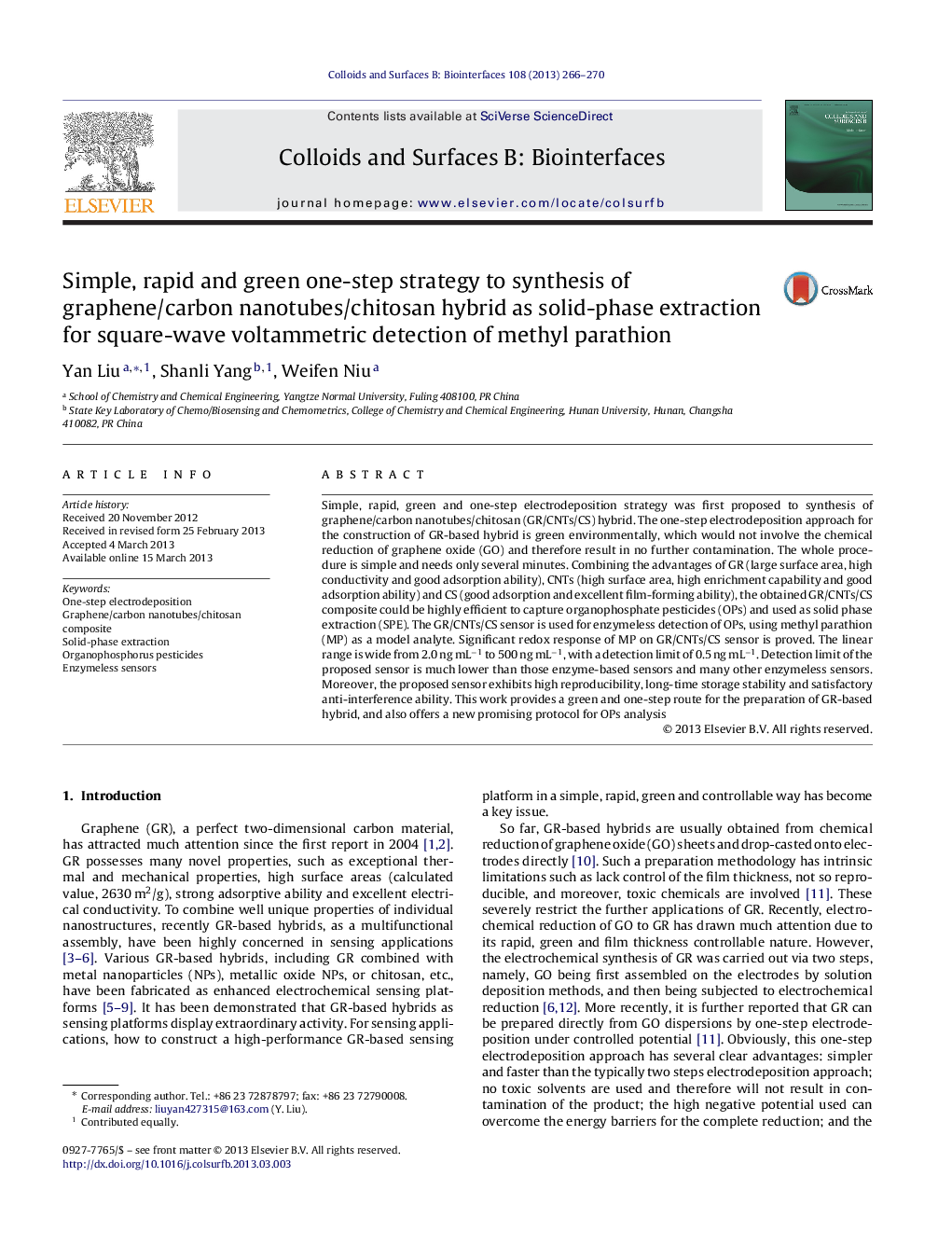| Article ID | Journal | Published Year | Pages | File Type |
|---|---|---|---|---|
| 600187 | Colloids and Surfaces B: Biointerfaces | 2013 | 5 Pages |
•One-step electrodeposition strategy to construct GR-based hybrid.•One-step, green, simple and rapid.•Highly efficient to solid-phase extraction of organophosphate.•Low detection limit; enzymeless sensor.•High reproducibility, long-time stability and good anti-interference ability.
Simple, rapid, green and one-step electrodeposition strategy was first proposed to synthesis of graphene/carbon nanotubes/chitosan (GR/CNTs/CS) hybrid. The one-step electrodeposition approach for the construction of GR-based hybrid is green environmentally, which would not involve the chemical reduction of graphene oxide (GO) and therefore result in no further contamination. The whole procedure is simple and needs only several minutes. Combining the advantages of GR (large surface area, high conductivity and good adsorption ability), CNTs (high surface area, high enrichment capability and good adsorption ability) and CS (good adsorption and excellent film-forming ability), the obtained GR/CNTs/CS composite could be highly efficient to capture organophosphate pesticides (OPs) and used as solid phase extraction (SPE). The GR/CNTs/CS sensor is used for enzymeless detection of OPs, using methyl parathion (MP) as a model analyte. Significant redox response of MP on GR/CNTs/CS sensor is proved. The linear range is wide from 2.0 ng mL−1 to 500 ng mL−1, with a detection limit of 0.5 ng mL−1. Detection limit of the proposed sensor is much lower than those enzyme-based sensors and many other enzymeless sensors. Moreover, the proposed sensor exhibits high reproducibility, long-time storage stability and satisfactory anti-interference ability. This work provides a green and one-step route for the preparation of GR-based hybrid, and also offers a new promising protocol for OPs analysis
Graphical abstractFigure optionsDownload full-size imageDownload as PowerPoint slide
